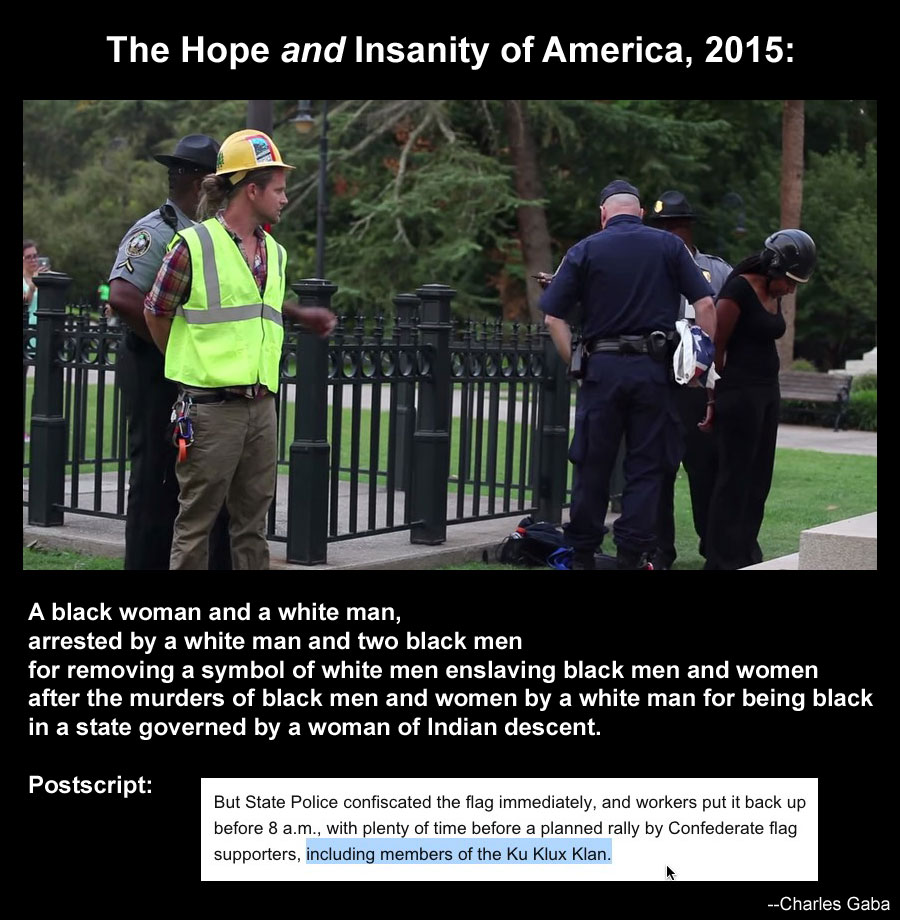Wrongo spent part of vacation reading John Barry’s Roger Williams and the Creation of the American Soul, an important (and very readable) book that describes the evolution of Williams’ beliefs about the proper role of religion in civil society. To the extent that we know anything about Roger Williams, it is that he founded Rhode Island. But, Barry makes a very persuasive case that he is an important reason why America has separation of church and state today, since Williams was the first person to describe individual liberty in modern terms.
We all learned in high school that colonists came to America for reasons of religious freedom. What few know is that, once they got here, the Puritans were more than willing to persecute those of the “wrong” religion. They built a society in which the heads of the church also ran the government, and only those who were admitted to their church (requiring a unanimous vote) had the right to vote. In fact, Barry says that one study found that only 21% of emigrants to New England were know to have ever been admitted to church membership. This was very similar everywhere else in the Christian world in the early 1600’s.
The Puritan-run Massachusetts Bay colony was a place of religious authoritarianism. The origin of the conflict between church and state was the view of John Winthrop’s “city on a hill”, an authoritative and theocentric state, while Williams called for utter separation of church and state and respect for individual rights, such as the right not to attend church services.
Massachusetts banished Williams, who moved first to Plymouth and then was banished again to what is modern Rhode Island. Over time, Williams provided both an example, and an intellectual foundation that led to America institutionalizing religious freedom.
Americans are rightly grateful to our founding fathers, who set our Constitution in the right direction, imbedding in it that there would be no official religion, no religious requirement for public office, and a separation of church and state.
The founders didn’t develop those ideas on their own. The philosopher John Locke is often credited with inspiring the idea of religious freedom in Jefferson and Madison. Barry shows that Locke was influenced by Roger Williams, and that Williams had an even more inclusive idea of religious freedom than Locke, thinking that atheists and Catholics should also have religious freedom, ideas that Locke didn’t share.
Williams got his ideas about the supremacy of individual liberty from his work in England with Sir Edward Coke. Williams worked for Coke, taking shorthand, and Coke was a major intellectual influence on Williams’s philosophy. When King James tried to assert the divine right of kings in England, Coke stood up against him with little behind him but the common law. Coke fought to establish the power of habeas corpus. He said “every Englishman’s home is as his castle.” He fought for the supremacy of Parliament over the King, and the supremacy of the Magna Carta as a basis for deciding individual vs. state rights.
Some of the rights Coke fought for in England, and spent time in the Tower of London for espousing, ended up embedded in our American Constitution.
With Rhode Island, Williams created the first government in the world which broke church and state apart. King Charles II copied the concept and some of the language on religious freedom in Rhode Island’s charter into the charters of New Jersey and Carolina, despite establishing the Anglican Church there. Rhode Island was also the first colony to declare independence from England in 1776, two months before the rest of the colonies.
Barry makes the point that few of the founders read Roger Williams, who had died in 1683, but they had read Coke, and most members of the Constitutional Convention knew Williams as a symbol of religious and political liberty.
Since the rise of Christian conservatives in the 1970s, the debate over these issues sounds depressingly similar to that between Williams and Winthrop in Massachusetts. In more obvious ways, each day brings us a new conflict in America over defining the proper role of religion in the matters of state, whether it is pharmacists refusing to dispense birth control, states closing abortion clinics, bakeries refusing to provide wedding cakes to same sex couples, or companies refusing insurance coverage for drugs or procedures they believe violate their religious principles.
Williams risked his life for freedom. His ideas, and his kind of courage were both rare in the 17th century. His was not the 21st century, cartoon-kind. We need more of his kind of courage today.
He was a rare man of faith who thought religious freedom and personal liberty were completely consistent with religious faith.

